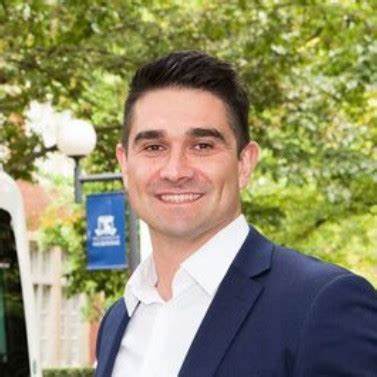Interview: Transport networks behave in ways that are often unpredictable


In our latest interview, we sit down with Daniel Hoyne, Head of Solution Consulting at Kapsch TrafficCom APAC, to explore the cutting-edge developments in the realm of connected vehicles, particularly focusing on the AIMES project's intelligent corridor. We discuss the project's goals, the technologies employed, and their impact on traffic management, contrasting them with traditional systems. This conversation promises to shed light on the integration of advanced sensors, AI, and machine learning in improving traffic flow and safety, especially in the context of autonomous and connected vehicles.
What is the primary purpose of the intelligent corridor in the AIMES project?
Researching in a real world environment where the outcomes of the project can be applied to scenarios that affect people and the movement of people and goods across a transport network.
How does the intelligent corridor differ from traditional traffic management systems in terms of infrastructure and technology?
The KiC (Kapsch intelligent Corridor) has much more technology deployed than a traditional approach. This is because we are afforded the luxury of being able to do this with a research mindset. This doesn’t mean that we use all the technology all at once, but in specific situations to measure the effectiveness of combined technologies to bring about a positive change on a network. The infrastructure doesn’t change as part of the project, rather we use what is already there in terms of traffics signals and lighting poles. This means that when we deploy outside of the KiC, we have evidence based on which approach is best for any given scenario.
What kind of sensors and devices are embedded within the intelligent corridor to gather data and improve traffic flow?
As part of the KiC we have deployed cameras, DSRC, roadside units, specialised traffic detection cameras, the Kapsch EcoTrafiX platform and the Deep Learning Versatile Platform. All of which are used in specific scenarios such as event management, pedestrian detection, yellow box detection and connected vehicle scenarios. Along with this we also have access to the sensors that the Department of Transport uses in terms of Bluetooth beacons, event data and incident data. we also receive data from the Bureau of meteorology. All of these sensors and data combine to create a situational awareness of the Kapsch intelligent Corridor along Nicholson Street.
How do these technologies interact with autonomous vehicles and what benefits do they bring in terms of safety and efficiency?
We've run trials with Lexus Australia in connected vehicle scenarios – these involved red light warnings and pedestrian detection or turn warnings. These scenarios are specifically designed with driver and pedestrian safety in mind. When it comes to connected vehicles, safety is the primary focus for our testing and trialling and with Lexus we had great success in these trials – the white paper is available on the website.
In terms of efficiency, when it comes to connected vehicles you need to have a higher saturation or concentration of vehicles in the area. At the moment that’s not quite possible in Melbourne, however we are deploying our connected mobility control centre which will set us up for future trials in connected and automated vehicles.
Are there any specific measures or technologies in the corridor that aim to promote sustainable transportation, such as electric vehicles or cycling?
Electric vehicles are not part of the programme within the Kapsch intelligent Corridor. The reason behind this is that electric vehicle policy is decided at the state level and as such most electric vehicles will be covered under a connected vehicle approach as they are the most advanced vehicles on the road they also come with connected capabilities which will be part of our connected vehicle trials. this also includes hybrid vehicles and alternative fuel vehicles; it really comes down to the technology within and not the means by which they are driven.
How does the data collected from the intelligent corridor contribute to the wider goals of the AIMES project?
As part of the aims project the data collected from the Kapsch intelligent Corridor forms a basis for many of the papers that are produced by the university of Melbourne. The papers are then presented at forums and conferences around the world.
What role do AI and machine learning play in the analysis and optimization of traffic flow within the intelligent corridor?
In certain scenarios AI plays a role for speed classification and identification of direction of actors on the road and this is important when we look at safety and efficiency for management of a strategic corridor. The deep learning versatile platform deploys AI algorithms which help it to more clearly and accurately identify elements of the road network in terms of pedestrians, vehicles, trams and other elements.
How are pedestrians and non-motorized road users, like cyclists, accommodated and protected within the intelligent corridor system?
Through the use of our DLVP we can more accurately identify these types of road users. Once we're able to identify them then we can scenario-plan more accurately for them and this is a valuable capability that road operators need moving into the future as mode shifting becomes a greater priority and need for sustainable traffic networks. In the coming years we are looking to deploy elements of the DLVP scenario plan for these types of road users.
What challenges or limitations have we faced in implementing the intelligent corridor in Melbourne?
When conducting a research project many challenges are faced in terms of the unknowns. We can plan for certain scenarios but because it's a real world environment we're often faced with elements of the transport network that behave in manners that are unpredictable. This is both a challenge and an opportunity in many ways as this is the very reason we conduct research projects in a real world environment.
Other challenges of rolling out the Kapsch intelligent Corridor are similar to what any project faces in terms of infrastructure readiness like stakeholder and partner buy-in and establishing key deliverables in a non-project, non-tender, or contractual arrangement.
What are the next steps in developing the intelligent corridor?
The next steps involve working with partners from public transport providers to other types of technology providers an really emulating what it's like to operate in a city where you have multiple entities that are delivering a vast range of services for the people and for the government. Again, this is why we do it in a real world environment so that we can test and improve – not only the technology but also the best approach when it comes to future focused technologies and also meeting the needs of existing challenges. After years being spent on delivering technology and platforms and rolling out the key enablers for the Kapsch intelligent Corridor, this year we're really focused on delivering more scenarios, more use cases and producing more results and white papers to get the benefits of what we're doing out into the industry and to government.
More information
If you want to find out more about what the Orchestrated Connected Corridor is and how it can make roads safer and more efficient, visit our dedicated OCC website or get access to our folder below.